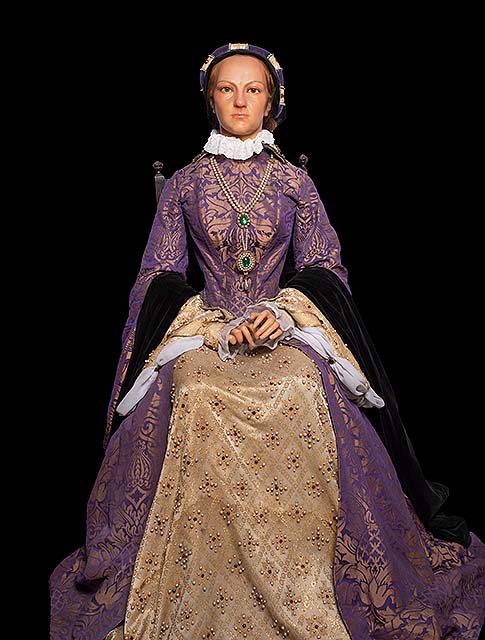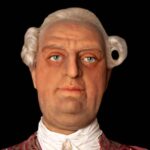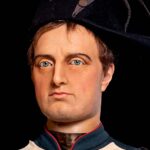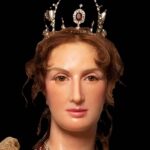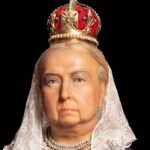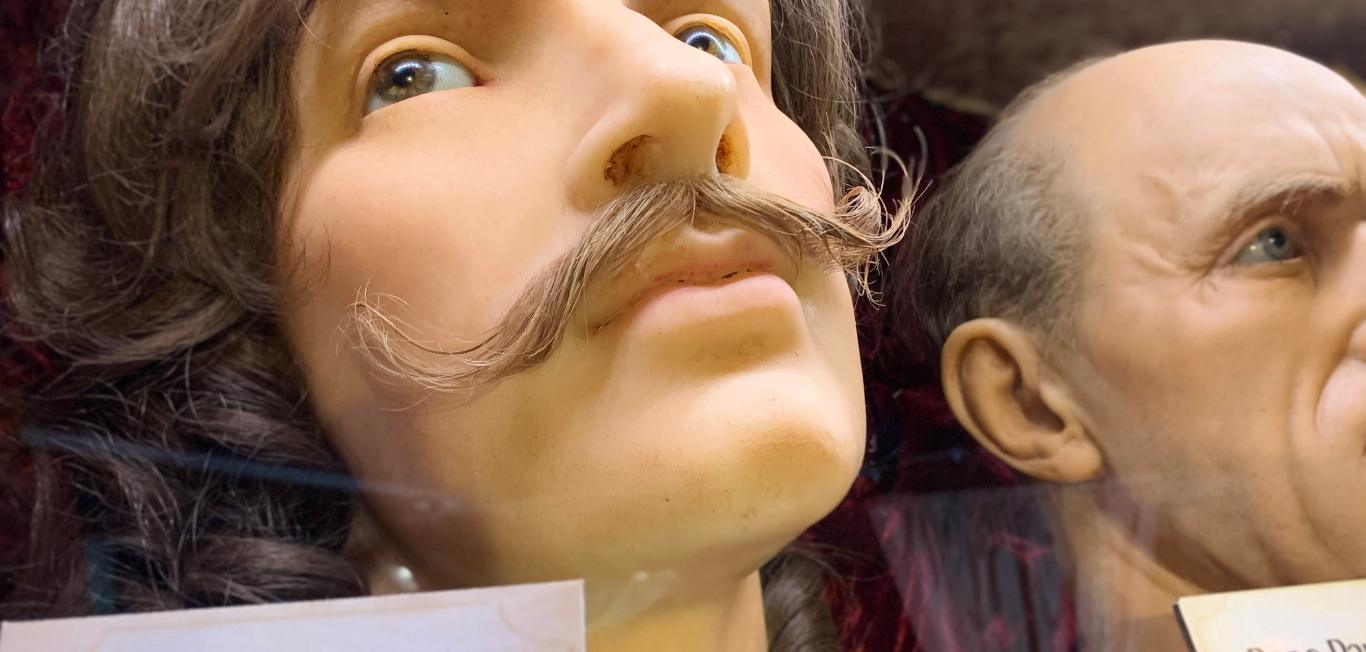ABOUT MARY I
Mary I, widely recognized as Mary Tudor and infamously referred to as “Bloody Mary,” holds a significant place in history as the first queen regnant of England and Ireland. Born on February 18, 1516, in Greenwich, near London, England, she ascended the throne as the fourth Tudor monarch in 1553 and held her regal authority until her death on November 17, 1558.
Mary I’s legacy is largely shaped by her controversial religious policies and brutal persecution of Protestants, earning her the nickname “Bloody Mary.” This name reflects the severity of her efforts to restore Roman Catholicism in England, marking a departure from the Protestant inclinations of her predecessors.
Mary I’s religious determination was evident in her attempts to reverse the Protestant reforms initiated by her father, Henry VIII, and her brother, Edward VI. She aimed to reinstate Catholicism as the dominant faith in the realm. Her reign oversaw the enforcement of laws against heresy, leading to the persecution and execution of numerous Protestants. This period of religious turbulence has etched Mary I’s name in the annals of history as a monarch whose policies were characterized by a ruthless pursuit of religious conformity.
While Mary I’s religious devoutness defined her reign, her tenure also faced challenges beyond matters of faith. The political dynamics of the time were marked by intrigue and power struggles, contributing to the complexity of her rule. Despite the controversies surrounding her, Mary I remains a significant figure in Tudor history, her impact echoing through the religious and political landscape of the Tudor era.
Early Life
On February 18, 1516, at the Palace of Placentia in Greenwich, London, King Henry VIII and Queen Catherine of Aragon first daughter to survive infancy, Mary I, was born. Three days after her birth, Mary I was baptized into the Catholic faith, and her confirmation was administered immediately after.
Mary I received a well-rounded education throughout her early childhood and showcased her intellect by her proficiency in Latin, French, Spanish and Greek. Her mother, Queen Catherine, oversaw much of her education and played a crucial part in her upbringing. In addition to her impressive acumen, Mary I added music and dance to her list of growing talents.
In 1525, Princess Mary I turned nine years old and was sent to Wales to preside over the “Council of Wales and the Marches.” This assignment came with significant responsibilities, as it involved government matters. She was given royal authority, typically only given to princes, which further emphasized the importance of her position.
DID YOU KNOW?
She was King Henry VIII and Queen Catherine of Aragon's first daughter to survive infancy.
Three years later, Mary I returned to London at the age of 12. Princess Mary I began to feel the effects of the strain in her parents’ marriage. This heavily affected her, leading her to experience constant stress and depression throughout her remaining adolescence. Due to King Henry VIII being unfavorable to Queen Catherine, Mary I was not allowed to see her mother, who was later removed from court.
Mary I’s early life was comprised of events and opportunities that created the groundwork for the complexities she would one day endure throughout her reign as the first queen of England and Ireland.
PERSONAL LIFE
King Henry VIII wasted no time in beginning his search to find Princess Mary a suitor. As soon as she was born, her future was being planned. The most significant courtiers King Henry VIII proposed Mary to were the dauphin of France, the Holy Roman Emperor Charles V, King Francis I, and Henry Duke of Orléans. It was not until Princess Mary I’s ascension to the throne became a legitimate possibility that marriage became a serious consideration for her. If she were to marry and have an heir, Mary I’s half sister Elizabeth I would no longer be in the direct line of succession.
Although her choice of suitor was disapproved of by her peers, Mary I married Prince Philip of Spain, the son of the Holy Roman Emperor Charles V. Before the marriage, there were several Parliamentary debates, but Mary I and Parliament agreed to certain restrictions and the wedding was authorized. Mary I and Prince Philip were wed at Winchester Palace on July 25, 1554. Unfortunately, their union produced no heirs.
Throughout the next four years, Queen Mary I’s health began to decline and she eventually succumbed, likely to stomach cancer, during the influenza epidemic on November 17, 1558, at St. James’s Palace. The final resting place of her remains is in a shared tomb with Elizabeth I, next to her mother, Catherine of Aragon, in Westminster Abbey. Subsequently, Mary I’s death gave her half sister Elizabeth I the throne. Mary I’s life was filled with political and familial dilemmas, which uncovered a steadfast ruler who could navigate these challenges. Mary I’s strategic marriage to produce an heir for the Tudor line fell short, but her legacy continues to be chronicled in history.
DID YOU KNOW?
Disapproved of by her peers, Mary I married Prince Philip of Spain, the son of the Holy Roman Emperor Charles V. Unfortunately, their union produced no heirs
INTERESTING FACTS
Mary I was the first queen regnant of England. She ruled in her own right, meaning she did not marry a king to earn her spot on the throne.
From her early childhood, Mary I was fluent in multiple languages and was able to read and write in Latin, French and Spanish.
As the first queen regnant, Mary I ruled England as the primary monarch. Her reign resulted in a momentous shift in female leadership in England.
Mary I’s resting place is in a shared tomb with her half sister, Queen Elizabeth I, at Westminster Abbey.
Reign
Mary I’s reign left an indelible mark on the annals of British history. Through political maneuvering, a tumultuous personal life, and a drastic approach to the complexities of political and religious reformations, Mary I achieved great recognition as a Tudor monarch.
After the annulment of King Henry VIII’s marriage to Catherine of Aragon, he deemed Mary I an illegitimate child, changing her title from “Princess Mary” to “The Lady Mary.” However, Mary I was still accepted into the court, which encouraged the “Pilgrimage of Grace” rebellion, supported by Lord Hussey, one of her former chamberlains. Those who rebelled with Lord Hussey advocated for Mary I to be recognized as the legitimate heir of King Henry VIII.
Mary I greatly influenced succession dynamics. After the death of King Henry VIII’s third wife and Mary I’s second stepmother, Queen Jane Seymour, in 1537, she assumed the role of godmother to her younger half brother Edward VI. In 1543, King Henry VIII married his sixth and final wife, Catherine Parr, who played a pivotal role in the king bringing both Mary I and Elizabeth I back into the line of succession through the “Act of Succession of 1544.”
Lady Jane Grey was proclaimed queen upon the death of Edward VI in 1553. Her tenure was brief, as she only ruled for nine days. Lady Grey’s reign concluded with prominent favor for Mary I. On July 19, 1553, Mary I ascended to the throne, marking a momentous shift in the future of England’s politics.
Upon her ascension to the throne, Mary I’s priority was to produce an heir to secure her religious reforms and prevent her half sister Elizabeth I from direct succession. She began her quest to find a suitable match to establish an heir to the throne.
As queen, Mary I legalized the marriage of her parents, King Henry VIII and Catherine of Aragon, and annulled the religious sanctions established by the late King Edward VI. Her reign continued widespread realignment that would renew Church doctrine to its original form and return the English Church to Roman Catholicism.
Mary I’s pursuit to restore the Catholic faith revived the “Heresy Act,” which led to the persecution of Protestants. This was a dark time in British history and Mary I’s reign. Anyone of the Protestant faith was either exiled or executed by burning, as they were declared heretics. This approach gave rise to anti-Catholic and anti-Spanish convictions in England and earned Mary I the nickname “Bloody Mary.”
Nickname Origin
Mary I's pursuit to restore the Catholic faith revived the "Heresy Act," which led to the persecution of Protestants. Anyone of the Protestant faith was either exiled or executed by burning. This approach earned Mary I the nickname "Bloody Mary."
DEATH
On November 17, 1558, Queen Mary I died at the age of 42 at Saint James’s Palace. Her death was likely a result of stomach cancer. The end of Mary I’s life also concluded her tedious religious reformation, which brought great relief to many in the British kingdom. Because her reformation held a dark shadow over England, November 17 was deemed a public holiday, known as Queene’s Day, and was celebrated for 300 years. This holiday marked the end of Queen Mary I’s religious turbulence and celebrated Queen Elizabeth I’s succession to the throne.
FAQs
Was Mary I successful in restoring Catholicism?
– Mary I attempted to restore Catholicism during her reign but did not have long-term success.
What was Mary I’s childhood like?
– Mary I had a well-rounded education in her childhood, which was comprised of privilege and royal opportunities.
How did Mary I become famous?
– Mary I became famous by being the first queen regnant and for her violent religious transformation tactics.
How did Mary I become queen?
– Mary I became queen through the “Third Succession Act,” which re-legitimized her as King Henry VIII’s daughter.
How did Mary I die?
– Mary I died during the influenza epidemic, likely from stomach cancer.
